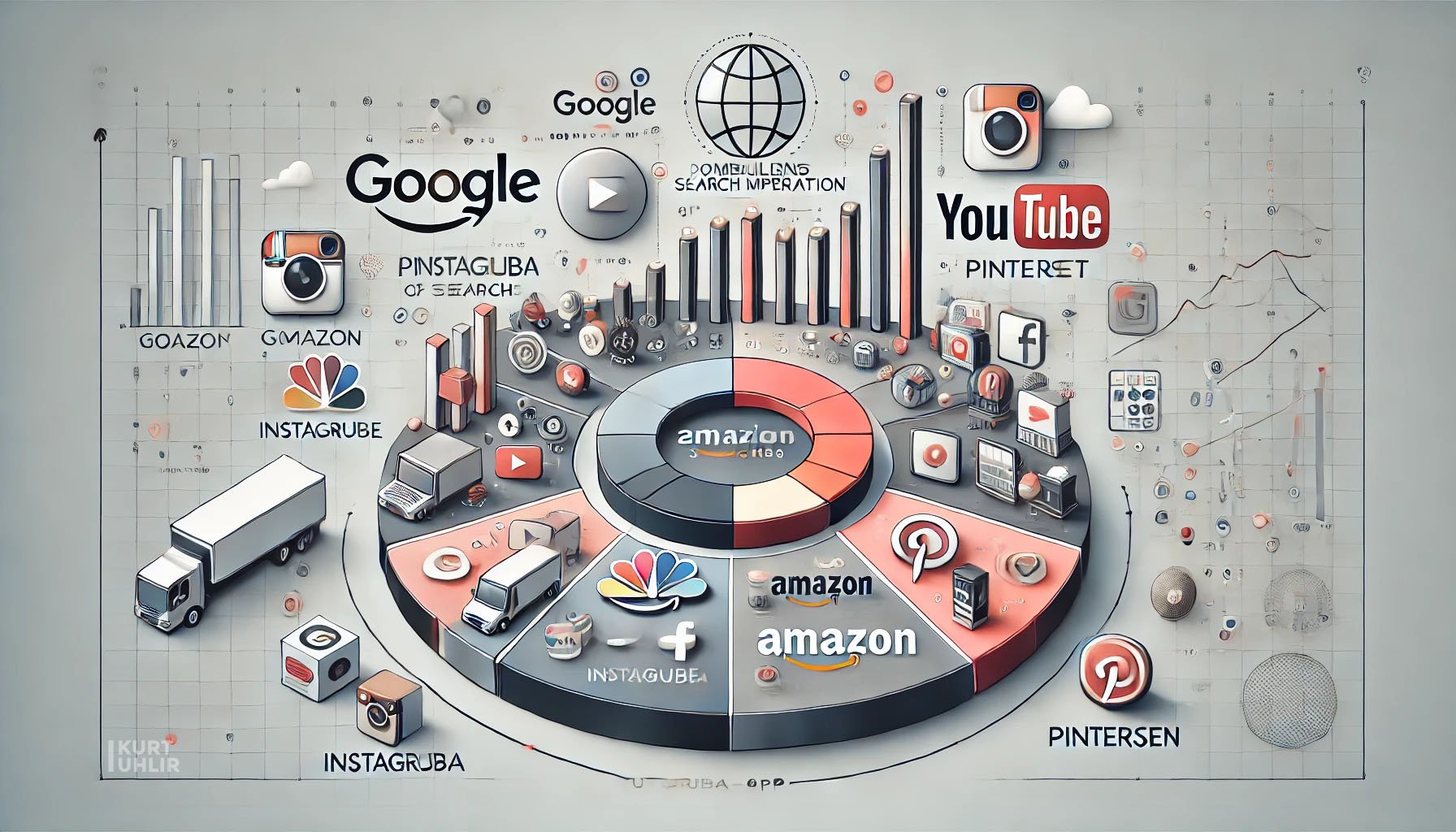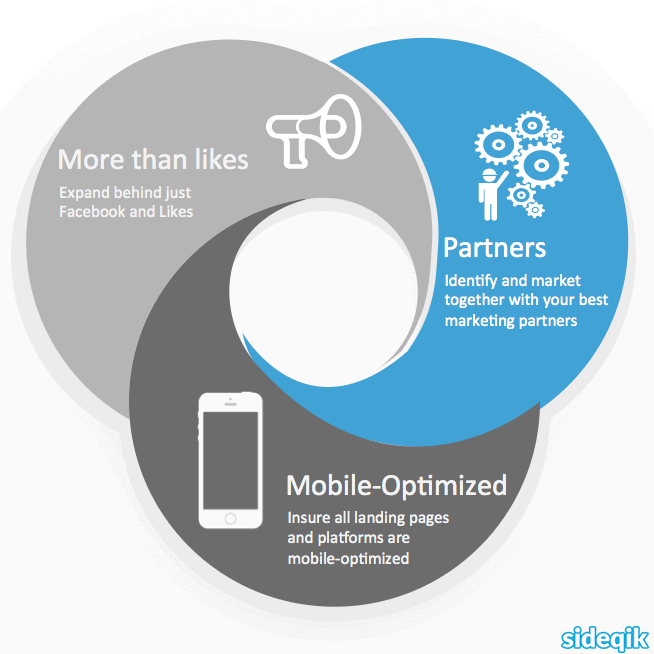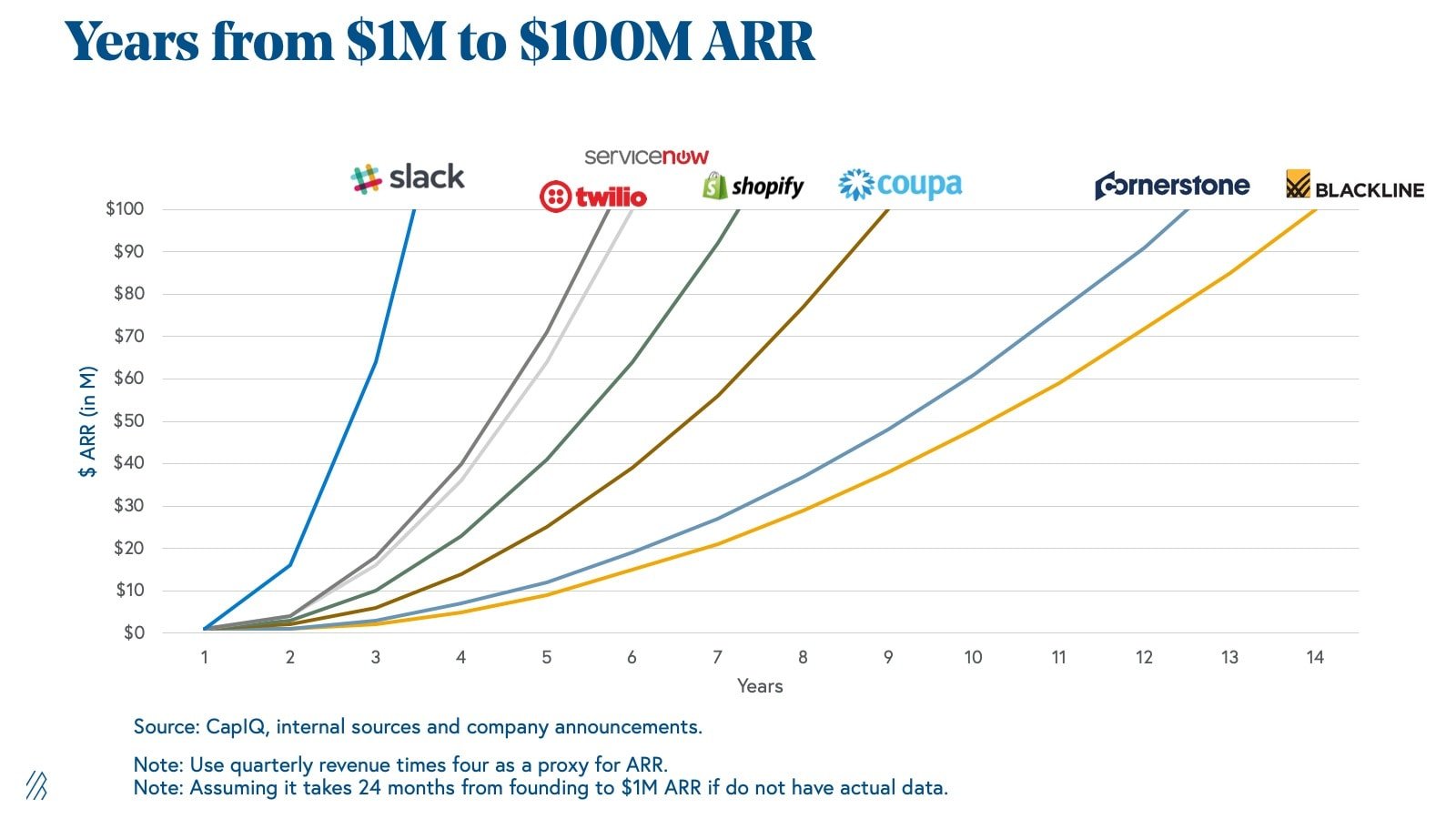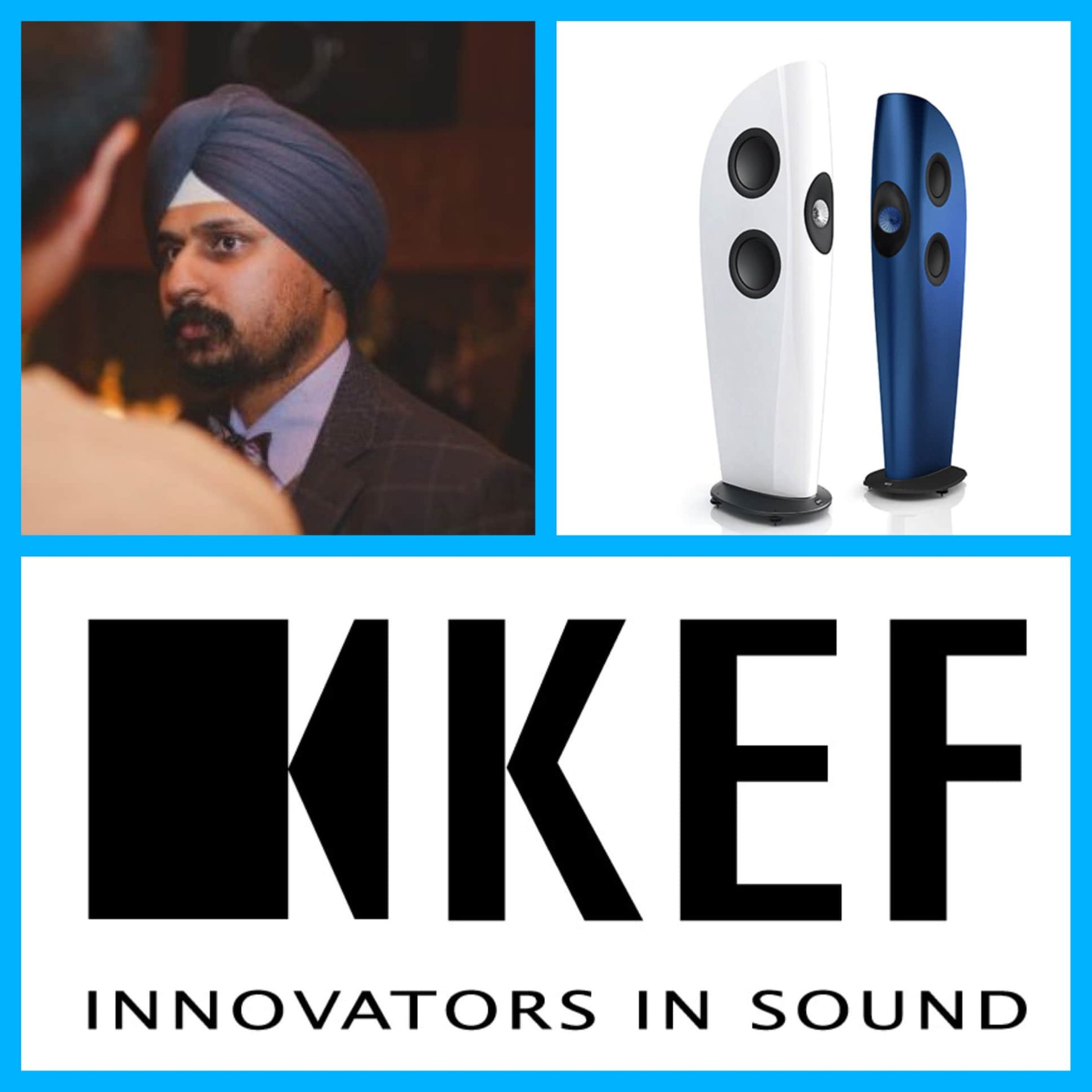Product Marketing: The Ultimate Guide for Scaling Your Company in 2026
In 2012, Apple launched its “Mac vs. P.C.” campaign showcasing two office workers: the cool, hip “Mac guy” and the clumsy, boring “P.C. guy.”
The message was crystal clear and the delivery ingenious—Apple products were more intelligent, faster, and more modern than P.C. products. This campaign stands as one of the great product marketing campaigns in modern business history, demonstrating how strong product marketing creates messaging that resonates with target audiences and emphasizes unique product benefits. Effective product marketing is crucial for creating demand and cutting through the noise in a crowded market by communicating value through storytelling and targeted strategies. A broader scope of marketing can include the entire brand, a portfolio of products, or the overall demand generation for the company.
Every successful product starts with an idea—the initial spark that drives the conceptual phase of development. Product marketing plays a critical role in turning that idea into a minimum viable product and ultimately a market-leading solution. Incorporating feedback from various teams helps improve product marketing effectiveness throughout the product lifecycle, ensuring the product evolves to meet market demands.
The campaign won an Effie award for creativity and popular appeal, sending customers rushing to Apple retailers to purchase their products. This wasn’t just clever advertising—it was strategic product marketing driving business growth through perfect positioning and messaging. Product marketing managers (PMMs) are responsible for managing product launches, ensuring that campaigns like this are executed effectively and achieve their intended impact.
I’ve seen first-hand how powerful product marketing transforms businesses. At HERE Technologies (formerly NAVTEQ), I helped grow the company from $85 million in annual revenue to $1.44 billion over a decade as we expanded from automotive navigation into smartphones and gaming. While that my teams have not always unlocked that level of hypergrowth, we have repeatedly found success in go-to-market plans that define or reshape industries in many industries.
The right product positioning and go-to-market strategy can completely redefine what’s possible for your business.
With this ultimate guide, you’ll master everything you need to know about product marketing and how to apply it immediately to drive revenue growth for your products and services, whether you’re in B2B, B2C, or SaaS markets.
What Is Product Marketing? The Definitive Definition
Product marketing is the strategic process of connecting a product with its target market. This connection happens through various marketing channels including TV, radio, email marketing, social media channels, and content marketing.
Effective product marketers analyze their target markets, create buyer personas, and assess customer needs, values, and beliefs. A deep understanding of the product’s functionality is essential to clearly communicate its value and features to the market. They then position the product’s characteristics to meet market needs, establishing the product as THE solution to existing demand. Sales enablement is a critical component of product marketing, equipping sales teams with necessary materials and training to effectively communicate the product’s value.
Coding plays a crucial role in supporting product marketing efforts, such as creating in-app onboarding experiences that enhance user engagement and product functionality.
According to seasoned product marketers across industries, the product marketer’s main responsibility is bridging the gap between product development and customer acquisition, focusing on how to sell products effectively by understanding the buying process and customer journey of potential buyers.
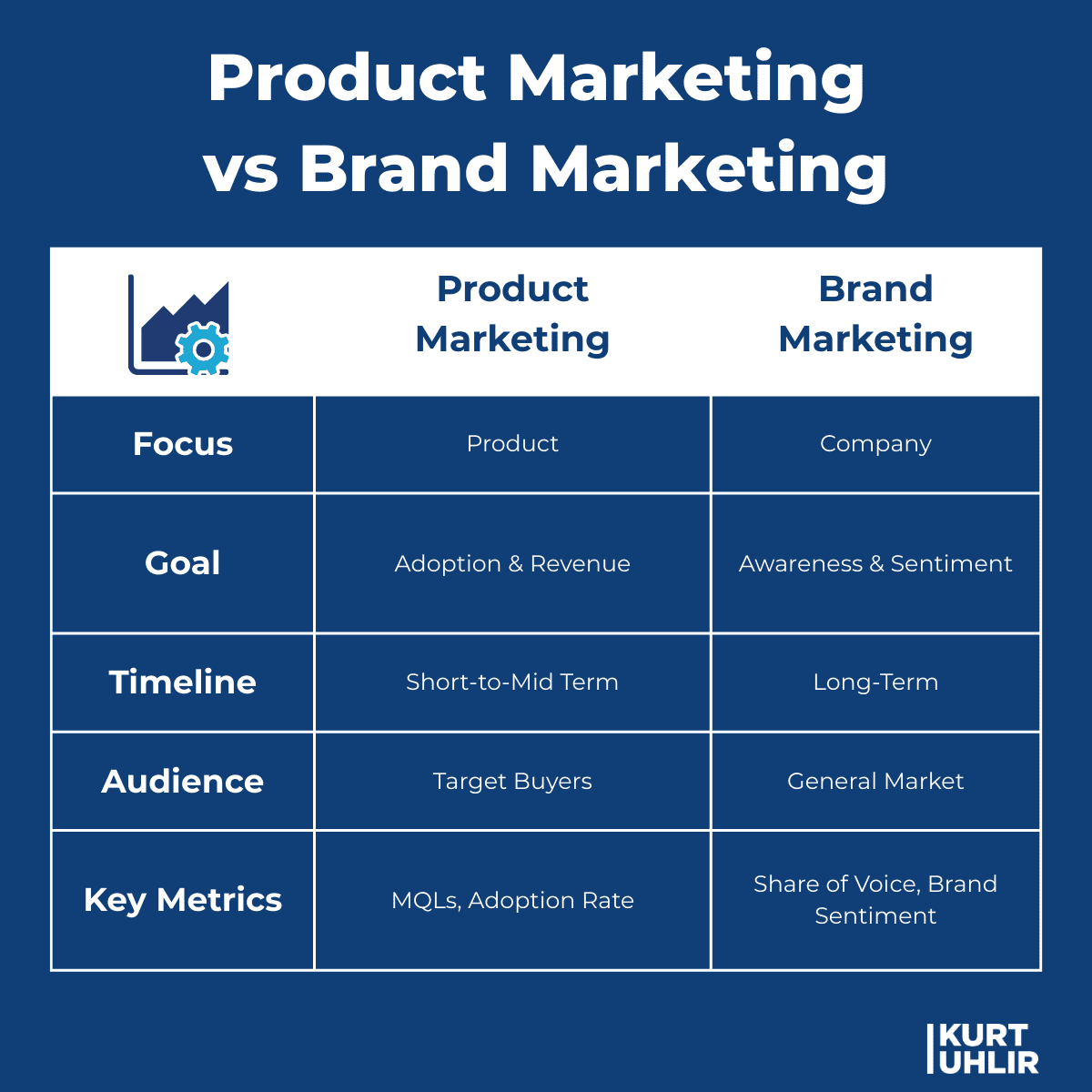
Product Marketing vs. Brand Marketing: Critical Differences
While brand marketing focuses on building company-wide recognition and reputation, product marketing concentrates specifically on positioning and promoting individual products. Product marketing often zeroes in on a specific product line within a company’s broader portfolio, ensuring that each offering aligns with customer needs and market segmentation. Brand marketing creates broad awareness and perception, while product marketing drives specific product adoption and sales.
A Chief Marketing Officer often oversees both functions, but they require different approaches:
- Brand marketing builds long-term company identity and values
- Product marketing drives immediate product adoption and revenue growth
- Brand marketing focuses on company perception
- Product marketing targets specific user onboarding and customer engagement
Now I mention that the CMO oversees both functions, but it is not rare for me to be asked for advise (often from the CEO or CMO) to look into the strategy and operation of company that is not reaching the growth outcomes they prefer. It is not rare for me to find Product Marketing sitting under the product team. Is this a problem unto itself? Not entirely, as those that have worked with me know that I care less about titles and authority than creating a cohesive highly productive environment across the company.
With that said, in almost 100% of the cases where I have been asked for guidance or mentoring on the growth of a company when product marketing sits underneath product, it is representative of a disconnect between house, sales, marketing, product, and engineering view their customers, the customers’ problems, the customers’ opportunities, the customers usage of the product (and other products), etc. That would make it more of a correlation than a cause.
Why Product Marketing Drives Business Growth
Product marketing matters because it establishes the critical connection between your products and their intended consumer base.
Each company does not have to have a dedicated product marketing role/team, but I do find it beneficial to have a single leader clearing taking ownership of the function. Making product marketing a priority within the organization is essential for driving growth and ensuring resources are focused on the most impactful initiatives.
This approach ensures audiences perceive your business’s offerings as essential to their satisfaction and well-being.
As a result, product marketing delivers several powerful benefits for technology companies and beyond:
Builds Deep Understanding of Customer Journey
To communicate product advantages effectively, marketing teams must assess market demand and determine customers’ explicit and implicit needs throughout their journey from awareness to purchase. Finding key insights about customer behavior and preferences is essential for informing product marketing strategies and ensuring messaging resonates with your audience. Key messaging combines user pain points and your product value into a short, memorable statement that’s easy to understand and remember.
Addressing the different stages of the sales cycle is crucial in product marketing to ensure strategies are tailored to each stage, enhancing overall effectiveness. Remember, the customer journey involves everything from the first perception of your company until that customer has been a paying customer for 10+ years.
Understanding your target market through proper market segmentation allows you to efficiently manage marketing channels since you know exactly who you’re trying to reach. This deep understanding builds the foundation for generating marketing qualified leads that convert at higher rates.
Creates Laser-Focused Go-to-Market Strategy
With thorough competitive analysis and market research, you can formulate effective strategies and messaging. Identifying what works becomes straightforward when market demand is clear and quantifiable through defined key performance indicators. Setting a clear goal for your go-to-market strategy is essential to measure success and ensure your team is aligned on the desired outcomes.
A strong go-to-market strategy addresses every touchpoint in the customer journey, from initial outbound marketing to final conversion, with particular attention to the positioning and messaging that will resonate with your target segments. A go-to-market (GTM) strategy is a tactical roadmap for launching a new product or entering a new market, ensuring alignment across teams and maximizing the product’s impact.
Makes Sales More Efficient Through Sales Enablement
Knowing everything about your target market narrows your focus, helping you reach paying customers faster. Product marketing makes it easier for sales teams to communicate value and close deals by simplifying complex information and providing intuitive resources. Defining your buyer personas helps you reach potential buyers through the right marketing channels.
This precision allows you to invest only in successful strategies, protecting your business’s time and resources. Product marketing plays a crucial role in sales enablement, helping sales teams close more deals by ensuring all stakeholders participate in the process with the right messaging framework.
Marketing qualified leads (MQLs) are essential in the lead conversion process, as they help align marketing and sales teams on lead qualifications.
Marketing automation enhances this efficiency, allowing your team to nurture leads systematically while tracking user adoption metrics to measure success.
Gives You Competitive Edge Through Differentiation
A focused marketing approach minimizes inefficiencies and unnecessary expenses, giving your business a distinct advantage over competitors. Understanding the options available in the market allows you to position your product more effectively, ensuring you address customer needs and stand out among alternatives.
This is especially critical in competitive SaaS product marketing, where differentiation can make or break user adoption.
As Apple’s marketing history shows, when you consistently meet market demands and articulate the product’s value to consumers through powerful positioning, you’ll build loyal customers who purchase exclusively from your company.
Keeping with the Apple example, how you handle differentiation should differ drastically depending on if you are the Challenger brand or if you are the dominant market player. Apple had a major shift in marketing strategy when their market share increased beyond the 1% to 3% that it was originally.
Bridges Product-Consumer Gap With Two-Way Communication
Product marketing requires bi-directional communication—marketers research existing and potential demand, then adjust marketing strategies to match. This approach communicates to customers that you recognize and value their needs, strengthening brand loyalty.
This feedback loop becomes a crucial part of the product roadmap, ensuring future developments align with actual market needs rather than internal assumptions.
This is also one of the areas that I find companies have the most opportunity to get value by changing things. Customer Success is often the single best group for gathering and testing perceptions with customers. Surveys are an effective method for collecting customer feedback and informing product marketing decisions. It is imperative for marketing, sales, and product to agree on what information is needed on customers and empower the CS team to gather that information and keep everyone up to date. Too many organizations treat Customer Success only as a way to reduce churn and push upsells. However, that misses the immense value that the team can provide to the company to help achieve its desired outcomes.
Aligns Internal Cross-Functional Teams
This section should not come as a surprise given to how I’ve spoken about marketing span organizations.
The process requires collaboration between sales, marketing, product management, and engineering teams. Product marketing brings together different teams to align strategies, gather feedback, and ensure successful product launches. Collaboration across departments ensures all teams clearly understand a product’s purpose and function. Product marketing informs the product roadmap with customer feedback.
When businesses adopt this unified approach, they strengthen employee cohesion and commitment. Cross-functional teams with clear alignment deliver better products faster with more effective launches.
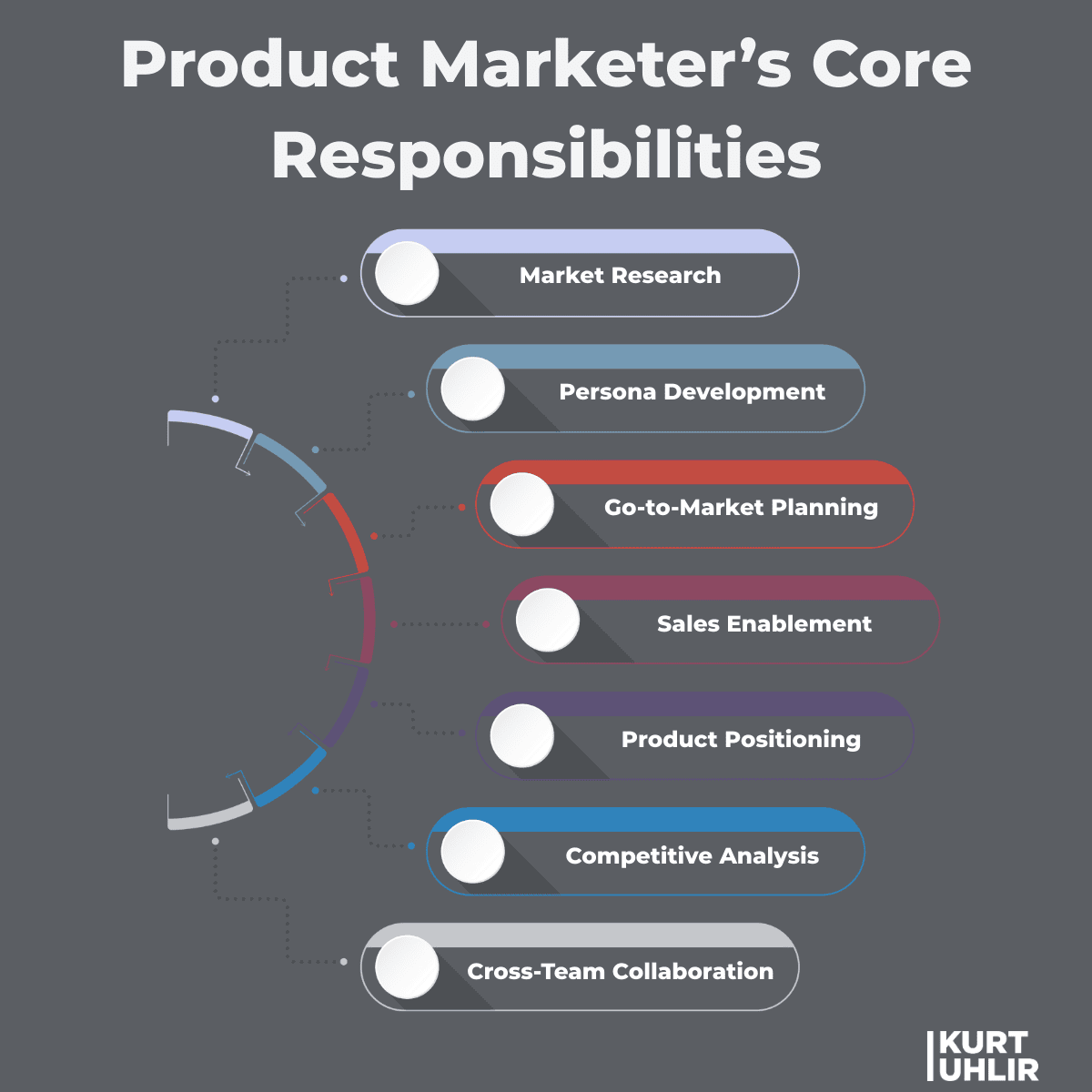
The Product Marketer’s Role and Responsibilities
Product marketers are essential members of any marketing team. In addition to formal education, practical experience in product marketing is highly valuable, as hands-on involvement equips professionals with the real-world skills needed to succeed. A competent product marketer bridges the gaps between all production, operations, and transaction members. Usually, these marketers work in teams led by a product manager or report directly to the Chief Marketing Officer.
During my time at Sideqik, we pioneered one of the first influencer marketing platforms by positioning our product at the intersection of social media analytics and partnership marketing. As the head of sales and marketing, I navigated the challenge of defining and creating an entirely new category. We had to educate the market on the concept of influencer marketing while simultaneously positioning our platform as the solution. This experience highlighted how product marketers often need to create the market conversation before they can dominate it.
Their key responsibilities include:
Market Research and Competitive Analysis
Product marketing starts with extensive research into customer needs and the competitive landscape. Asking the right questions during this research is essential to uncover market opportunities, guide strategic planning, and inform your overall product marketing strategy. When product marketers conduct thorough market research, they empower the rest of your teams to create more efficient and relevant campaigns.
It is crucial to set clear objectives and results that marketers should expect to achieve, ensuring that all efforts are aligned with anticipated outcomes and goals.
Additionally, product marketers identify your competitors’ strategies and results, adjusting your strategy to fill existing gaps in the market. Tracking market trends and customer feedback is essential for adjusting strategies and ensuring ongoing success.
Comprehensive competitive analysis helps identify opportunities for differentiation and informs the messaging framework that will set your products apart.
When I took over competitive intelligence for Navteq shortly after our IPO, this consolidated view of our competition fed into all parts of our organization and drastically changed how we sold, how we positioned the product, how we worked with value added resellers (VARs), and how we approached renewals. Now, at other companies, I’ve found competitive analysis is better owned by Product with marketing feeding in the branding/value portions.
Buyer Persona Development and Market Segmentation
A product marketer will generate detailed buyer personas and ideal customer profiles, allowing you to narrow focus and maximize conversions. They identify the exact needs of your target audience through proper market segmentation, enabling you to meet them better.
Creating user personas is crucial to define target audiences effectively. User personas help in identifying ideal buyers, including their pain points, goals, and demographics, which in turn enables more tailored marketing strategies and product messaging.
It is almost amusing how often I get pushed back on this from other leaders within the company. Sometimes they do not see value in it and other times sales and or product want to have their own personas. In my experience, though, it is critical for unlocking growth, that sales, marketing, and product all have a single set of user personas, as well as personas for the decision-maker and influencers impact in the sale and usage. I will often take the lead in broker in this relationship and ensuring that we vigorously agree on everyone involved in the usage in decision of our offerings.
There are several things marketing should consider and track when developing buyer personas. When done properly, marketing will aggregate and keep up-to-date data from
- Sales discussions
- Perceptions set by marketing messaging
- Core usage personas
- Usage patterns
- Support topics and data from customer success
- Mapping usage data to the above
- Mapping upsell data to the above
- Mapping churn data to the above
- What budget lines typically pay for our product or services
- Our rate of referrals to new customers
- Who the influencers are that are involved in the decision-making process
- And many other items.
For B2B product marketing, this often involves account-based marketing (ABM) approaches that target specific high-value accounts with personalized messaging.
Product Positioning and Value Proposition Development
With relevant data, product marketers determine exactly how to price and position your product so your target audience will purchase it. They quickly identify unique selling points (USPs) to distinguish your product from others and develop compelling messaging to reach customers directly.
The value proposition becomes the cornerstone of all marketing efforts, clearly articulating why customers should choose your solution over competitors. Product marketers work on creating competitive and targeted content strategies to best articulate the product’s value to customers.
I would add to this that a great product marketer will also ensure that there is absolute agreement from sales to marketing to product to engineering on the value props in the customers are actually using the product. The person who has ownership for product marketing must have the ability to facilitate healthy conflict across the organization until there is agreement, and then repeat this process at least quarterly.
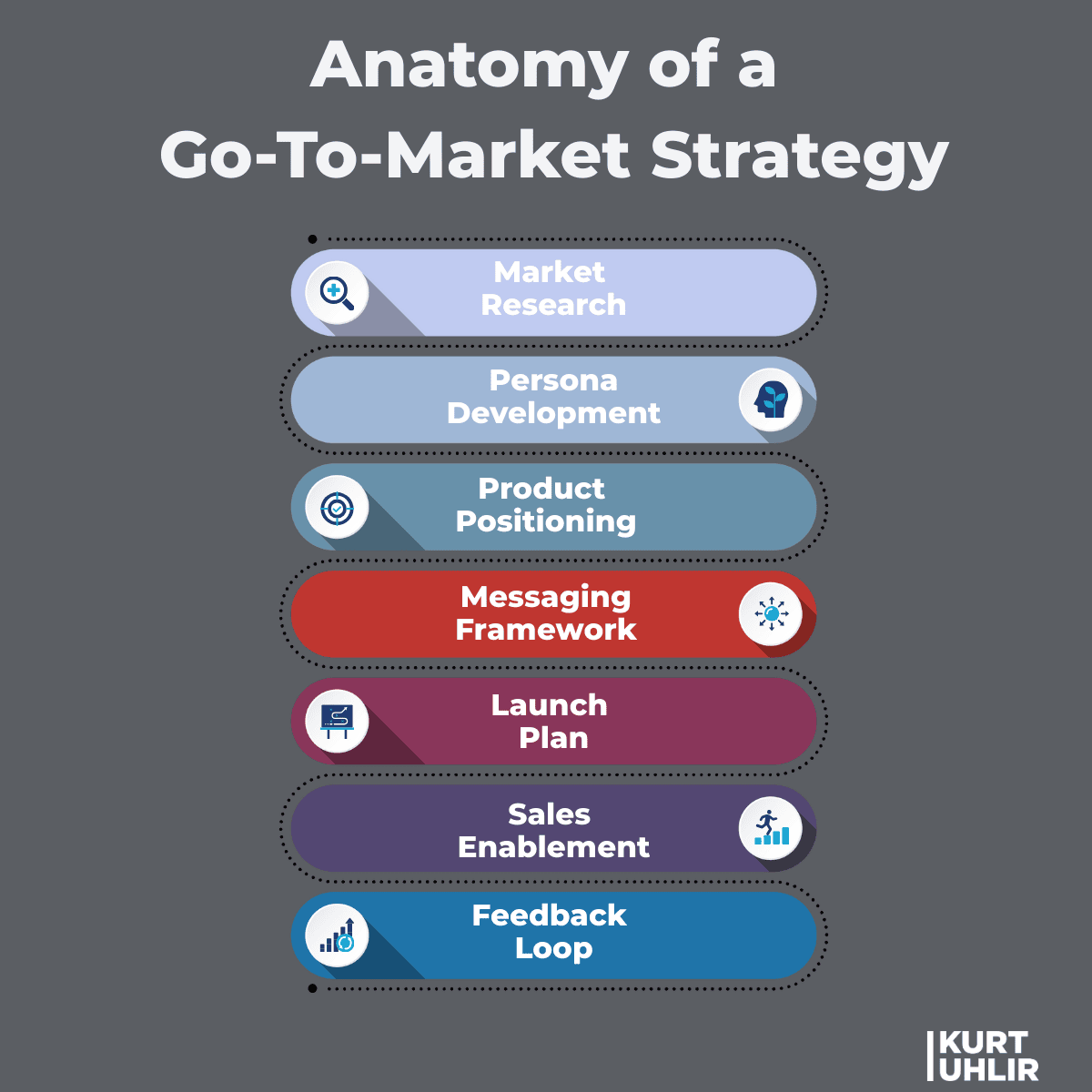
Go-to-Market Strategy Planning and Execution
Once they’ve identified market needs and how to meet them, product marketers craft strategic go-to-market plans to ensure successful launches. This plan not only boosts visibility and sales but clarifies positioning for other employees.
The go-to-market strategy for SaaS products often differs from physical products, focusing more on trial conversions, freemium models, and user onboarding experiences. B2B product marketing strategies typically involve longer sales cycles and relationship building, while B2C product marketing focuses on emotional appeals and quick conversions.
Cross-Functional Collaboration and Alignment
Product marketers work collaboratively with other teams, ensuring all stakeholders participate in the process, strengthening cohesion across the organization. Shared goals and experiences are essential for fostering effective cross-functional collaboration, as they create alignment and a sense of community among team members. They may receive sales and marketing training as the position requires talent across departments.
Research shows that cross-functional teams contribute significantly to innovation and efficiency. Product marketers help sales teams by creating sales collateral and supporting enablement. Their responsibilities include managing product launches, positioning, messaging, and creating sales enablement materials to ensure the product’s success in the market.
Product Launch Management and User Onboarding
Product marketers are responsible for making both internal and external launches successful, working closely with the engineering team to ensure alignment with the launch date. Creating launch content is vital for a successful product launch, covering all necessary promotional materials to effectively communicate the product’s value and features to the target audience.
When I adjusted our positioning at Vitrue, our social media management platform required careful orchestration between product development and market communication. For each new platform component launch, we created a dual-track strategy: first educating internal teams (especially sales and customer success) about the new capabilities, then crafting compelling external narratives that positioned these features as solutions to emerging social media challenges. This approach was critical to our success and ultimately contributed to Oracle’s acquisition of the company.
A successful internal launch ensures employees understand the product’s function, benefits, goals, features, pricing, and value to customers. Product marketers play a vital role in the launch process, ensuring all teams are prepared and that marketing materials are ready. Creating launch content is essential for a product marketing strategy to ensure effective communication.
An external launch communicates the benefits of the product to consumers across different platforms, such as:
- Websites and landing pages
- Blog content and thought leadership
- Social media channels
- Events and webinars
- In-stores for physical products
- Third-party platforms and partnerships
Post-launch, product marketers track progress, communicate with teams, optimize user journeys, and evaluate the success of marketing strategies to ensure continued growth and customer engagement.
After launch, product marketers focus on user onboarding to ensure new users quickly realize value and achieve success with the product. Customer onboarding is crucial for SaaS companies as it ensures users understand and experience the product’s value early on. Continuous optimization of the onboarding process is crucial to drive user adoption in software products, ensuring that users remain engaged and satisfied throughout their journey.
Demand Generation and Lead Qualification
Product marketers create demand through campaigns and events to boost visibility and sales. Interactive product demos familiarize users with your product, its key functionalities, and how it solves their problems. A well-structured marketing automation strategy enhances the efficiency of product marketing efforts post-launch, streamlining processes and ensuring consistent engagement with users.
In doing so, they build awareness around product benefits and encourage conversions. Hosting educational webinars drives customer success by addressing user pain points and solutions. Incentivizing happy customers to share experiences through referrals and testimonials is an effective word-of-mouth marketing strategy that amplifies the product’s reach and credibility.
Effective demand generation creates a steady flow of marketing qualified leads (MQLs) that can be nurtured through the sales process, contributing directly to revenue growth.
Performance Monitoring and Key Performance Indicators
Product marketing success requires measuring the right metrics. It includes customer and market research before and after product launches to define strategies. Growth loops embed marketing activities into product development to ensure sustainable growth through user-generated content. Tracking key performance indicators (KPIs) after a product’s launch informs ongoing marketing efforts and adjustments, ensuring strategies remain effective and aligned with business goals.
A product marketer’s job after launch is to assess campaign outcomes and their effect on customer behaviors, course-correcting to address any challenges that arise. In summary, the most important metrics to track in product marketing focus on lead generation, conversion, engagement, adoption, revenue, and market share. Key performance indicators typically include:
- Marketing qualified leads generated
- Conversion rates through the buying process
- Customer engagement metrics
- User adoption rates
- Revenue growth attributed to marketing efforts
- Market share growth
B2B vs B2C Product Marketing: Understanding the Differences
The approaches to B2B and B2C product marketing differ significantly in several key areas:
B2B Product Marketing Strategy
- Focuses on rational decision-making and ROI
- Understands the emotional drivers of the primary decision-maker.
- Involves multiple stakeholders in the buying process
- Typically has longer sales cycles
- Emphasizes relationship building and trust
- Often employs account-based marketing (ABM)
- Values detailed content marketing and thought leadership
- Prioritizes sales enablement and customer success
- Carefully manages spend on marketing initiatives to maximize ROI
Marketing communications play a crucial role in customer acquisition and maintaining a consistent marketing message. They work in tandem with other marketing strategies to promote a company or brand, ensuring that the overall marketing efforts are cohesive and effective.
B2C Product Marketing
- Appeals more to emotional drivers and lifestyle benefits
- Targets individual consumers
- Features shorter, simpler buying processes
- Focuses on mass appeal and broad reach
- Emphasizes brand experience and customer engagement
- B2C campaigns are often built around featuring unique product attributes or experiences, such as limited-edition releases or innovative design elements
- Values visual content and social proof
- Prioritizes user experience and simplicity
SaaS Product Marketing Considerations
SaaS product marketing often combines elements of both B2B and B2C approaches, with some unique considerations:
- Focuses on continuous engagement rather than one-time purchases
- Emphasizes user onboarding and activation
- Measures success through retention and reduced churn
- Often employs freemium or trial models
- Requires clear product positioning against numerous competitors
- Values user interface simplicity and self-service capabilities
- Highlights the importance of speed in executing SaaS product marketing strategies and responding quickly to market changes
- Prioritizes feature awareness and usage
Software tools play a crucial role in supporting product marketing efforts by streamlining processes, automating tasks, and enhancing communication, ultimately leading to more successful product launches and better customer experiences.
Real-World Product Marketing Success Stories
There are many examples of successful product marketing campaigns among popular brands. We’ve discussed Apple’s “Mac vs. P.C.” campaign, but several others illustrate the potential of a strong product marketing strategy. Having a great product is essential, but effective product marketing ensures it reaches and resonates with the target audience. Crafting consistent messaging across all marketing materials builds trust and authority with customers, which is a cornerstone of successful campaigns.
Nike
Nike has built a brand around contrarianism. The company has a long history of taking on complex subjects and unique strategies.
For example, in 1970, Nike initiated the now-widespread practice of using celebrity endorsements to sell products. While other companies considered the approach dubious, Nike reaped the benefits.
Nike also endorsed Colin Kaepernick, a controversial football player nearly ex-communicated by the entire athletic industry—Nike’s value reportedly increased by $6 billion. Now, whether you agree with this approach or not, the key is to understand their shift and product marketing from the original founding. This was an intentional change.
The National Dairy Board
As milk consumption began to decline in the 1990s, the National Dairy Board sought to boost sales—with a small budget.
Product marketers at Goodby, Silverstein, and Partners conducted extensive research and found that most milk drinkers didn’t think to buy milk until it was gone.
Their research resulted in the award-winning, globally recognized “Got Milk?” campaign, which continues to this day. This wide-range campaign is easily recognizable and memorable, demonstrating how deep understanding of the customer journey can lead to powerful messaging.
Tim Ferris’ The 4-Hour Workweek
Tim Ferris promised his readers they could, like him, escape their dreary cubicles and become rich—while working only four hours a week.
Unlike other products that fail to deliver on their promises, the book caters directly to individual needs and explicitly details each step the author took to escape the nine-to-five.
As a result, Ferris gained a loyal following of satisfied consumers. His work underscores the importance of understanding your customer base and building trust between your business and its patrons. Customer feedback collection helps measure satisfaction and is crucial for improving your product.
Whether you agree with the four-hour work week approach or not, we can all agree that the concept of people looking for flexibility in how they approach work in personal time has greatly shifted since this book. As an example, in the last round of hiring a team leader a few years ago, I had one gentleman make sure that he would be able to have the flexibility to pick up his daughter from school in the afternoon as long as he was still reaching business outcomes. That actually increased my desire to hire him because he understood that I was hiring him to reach specific business outcomes, and he was comfortable enough with healthy conflict to make sure we had agreement upfront on how he would help us reach those.
Slack’s Word-of-Mouth Growth Strategy
Slack revolutionized team communication through a clever product marketing strategy focused on user adoption and viral growth. Rather than traditional outbound marketing, Slack grew through:
- Exceptional user onboarding
- Word-of-mouth referrals
- Free tier offering substantial value
- Cross-functional team support features
- Integration with essential tools
Driving up product sign-ups through interactive product demos also played a crucial role in enhancing user engagement and ultimately leading to more sign-ups for their services.
This approach to growth marketing made Slack the fastest-growing B2B SaaS application in history, demonstrating how product marketing plays a central role in business growth.
How to Win at Product Marketing
Effective product marketers excel at researching, connecting with people, learning buyer personas, and working collaboratively across departments. They carry many diverse responsibilities and work ceaselessly to understand the market better and cater to it. Setting clear objectives and regularly measuring performance allows product marketers to achieve their desired outcomes.
Make Research Your Foundation
Investing in research is essential to the product marketing cycle. Effective product marketers constantly research patterns in demand, customer characteristics and needs, market trends, and audience response to campaigns. This information builds comprehensive buyer personas.
Without in-depth research, marketing teams can neither anticipate demand nor construct efficient go-to-market plans to reach the target market. This is not a one time event either, it is something that will need to be repeated and contributed to forever.
Connect Authentically With Your Audience
Ferris’ work highlights that a strong relationship between a business and its customers greatly impacts a product’s success by making customers feel valued and understood.
As a product marketer, you need to understand everything about your audience AND communicate your investment and loyalty to them. Adopting detailed buyer personas will help you better understand customer needs. Personalization ensures you cater to different market segments and enhances customer success.
Ensure you anticipate customer needs and consistently deliver on promises. Engage with consumers and build a community around your brand across social media channels and other platforms.
I looked the higher product marketers that want to make sure customers know that we are trying to make a raving fans, not simply reach a revenue
Develop a Strong Value Proposition and Messaging Framework
Your value proposition should clearly articulate to target customers how and why your product will bring value to their lives. This becomes the foundation of your messaging framework that guides all communications.
Understanding the reasons behind successful product marketing efforts, such as addressing customer needs and the unique dynamics between B2B and B2C sales cycles, is crucial.
To determine your value proposition, ask yourself:
- What are the benefits of using this product relative to existing products?
- What are the benefits of acquiring this product?
- Where are the gaps between supply and demand, and how will this product fill them?
- What are competitors doing to address consumer needs?
- How will this product distinguish itself from others?
A complete messaging framework extends beyond the value proposition to include:
- Positioning statements for different market segments
- Key messages for various buyer personas
- Competitive differentiation points
- Feature-to-benefit mappings
- Common objections and responses
- Evidence points and social proof
Create Bold Marketing Campaigns That Drive Growth
As the previous examples suggest, creating innovative marketing campaigns is essential to product marketing success.
Creative campaigns often capitalize on audience interests and appeal to entrenched values and beliefs. They’re innovative and often risky, but with risk comes reward (consider Nike’s endorsement campaigns).
Use these tips to generate product ideas for growth marketing:
- Prioritize aesthetic and emotional appeals
- Capitalize on customer input, referrals, and reviews
- Establish partnerships with other brands or companies
- Track industry trends, holidays, and famous figures and products
- Use social media to quickly and efficiently reach customers
- Partner with influencers and other businesses
Craft Compelling Copy and Content Marketing
The quality of your copy should articulate your brand and product messaging clearly and effectively. Ensure you write or outsource high-quality copywriting that communicates your brand and product message.
Your copy should communicate your connection to your audience and value proposition, convey urgency, and evoke intrigue. Both product marketing and field marketing provide valuable market-facing insights that contribute to effective demand generation programs.
Content marketing extends beyond copy to include:
- Educational blog content
- Product demos and tutorials
- Customer success stories
- Thought leadership
- Technical documentation
- Comparison guides
- Industry analysis
Master Social Media Channels and Digital Marketing
Social media is highly effective as a platform for product marketing today. B2B product marketing refers to any marketing strategies or techniques that make other businesses familiar with your brand name and product value and convert them into customers.
Importantly, defining your company’s position and strategy in a competitive landscape is crucial for success.
Use these tips to maximize your impact on social media channels:
- Stay consistent with your brand and messaging
- Follow relevant keywords and hashtags to identify trends
- Jump on trends and challenges
- Collaborate with other businesses and influencers
- Issue quality content—roughly 80% should be informational and 20% promotional
- Tell a compelling story about your product’s impact
Optimize Your Website for SEO and Conversion
Search engine optimization (SEO) determines the breadth of your viewership, and a well-structured page is crucial for effective SEO. Follow these best practices:
- Use relevant keywords and phrases related to product marketing
- Demonstrate expertise, authority, and credibility
- Create topic clusters around key product features and benefits
- Implement internal linking strategies
- Develop original content that addresses buyer pain points
- Optimize for conversion at each stage of the customer journey
Align With Product Management and Engineering
Product marketing is a collaborative endeavor. Work closely with the product manager, engineering team, and product management team to better understand the product’s purpose, features, function, and relevance. B2B product marketing involves everything you do to drive customers’ interest in your product and boost product engagement.
Adjust your campaigns according to decisions made by the product management team and connect marketing insights to the product roadmap. Hold regular product strategy meetings to ensure consistent communications across cross-functional teams.
One place where companies miss this alignment is making sure that product marketing is reviewing release notes and any view into roadmaps. I have found that product and engineering often love it when the product marketin takes ownership for gathering the requirements for these in drafting what is sent to customers, with product being a sign off on what is sent.
Implement Marketing Automation for Efficiency
Marketing automation tools streamline repetitive tasks and enhance marketing effectiveness. They allow your team to:
- Nurture leads more efficiently
- Score and qualify leads systematically
- Track customer engagement metrics
- Provide personalized communications at scale
- Test and optimize marketing messages
- Manage complex multi-channel campaigns
- Accurately attribute marketing impact on revenue
Track Results and Adapt With Key Performance Indicators
Tracking results and tweaking your strategy according to defined key performance indicators is essential for ongoing success. Conduct research consistently throughout campaigns to determine what’s working and what isn’t. Analyzing user interactions helps identify friction points within your application, allowing you to improve customer experience.
Adjust your approach according to the data you generate; the best campaigns are flexible and adaptive. Setting specific goals helps ensure your marketing efforts are productive and measurable.
Common key performance indicators for product marketing include:
- Conversion rates throughout the customer journey
- Customer acquisition cost
- Lifetime customer value
- Product adoption metrics
- Revenue growth attribution
- Market share growth
- Customer satisfaction scores
- Competitive win rates
Product Marketing vs. Product Management
Product marketers share specific responsibilities with product management teams, but the two have important distinctions. While product marketers work with management teams, they liaise between product management and customers.
Product marketers focus on:
- Market positioning and messaging
- Sales enablement and support
- Competitive analysis
- Go-to-market strategy
- Customer insights and feedback
Product managers focus on:
- Product roadmap development
- Feature prioritization
- Technical requirements
- Internal development coordination
- Product vision and strategy
Many businesses adopt product-led growth teams that unify both positions and share responsibilities, recognizing that the most effective approach combines both perspectives.
When to Make Your First Marketing Hire
For startups and growing businesses, timing your first marketing hire is crucial. Consider bringing on a product marketer when:
- You have product-market fit and need to scale
- Your sales team needs better messaging and materials
- You’re entering new markets or segments
- You’re launching significant new products or features
- Your competitors are gaining ground through better positioning
The first marketing hire should typically be a versatile product marketer who can handle multiple aspects of marketing rather than a specialist.
Organizational Positioning
Product marketers are involved in various aspects of the business, working closely with product team management, sales, and product development. While they are part of the product marketing team, they also collaborate with product management, sales, and development.
Product marketers facilitate cohesion and consistency across all departments, so they occupy flexible roles and take on broad responsibilities. In some organizations, especially SaaS companies, product marketing may fall under:
- The Chief Marketing Officer
- The Chief Product Officer
- A dedicated VP of Product Marketing
- The Chief Growth Officer
Product Marketing vs. Growth Marketing
While product marketing focuses on positioning and promoting specific products, growth marketing concentrates on overall business expansion through experimentation and optimization.
At Showcase IDX, I experienced the powerful synergy between these approaches. We scaled our martech SaaS platform to thousands of real estate agents across 100+ brokers and teams throughout the United States and Canada by first establishing strong product positioning (emphasizing IDX search as a lead generation tool rather than just a website feature), then implementing growth marketing techniques to optimize conversion funnels and user acquisition channels. This hybrid approach generated both immediate growth and sustainable competitive advantage.
Growth marketing:
- Tests various acquisition channels
- Optimizes conversion funnels
- Focuses on retention and referral
- Employs rapid experimentation
- Prioritizes metrics and analytics
Product marketing:
- Develops product positioning and messaging
- Ensures successful product launches
- Enables sales teams
- Manages product communication
- Gathers market and competitive intelligence
Both disciplines are essential for sustainable business growth, with product marketing providing the foundation and growth marketing accelerating expansion.
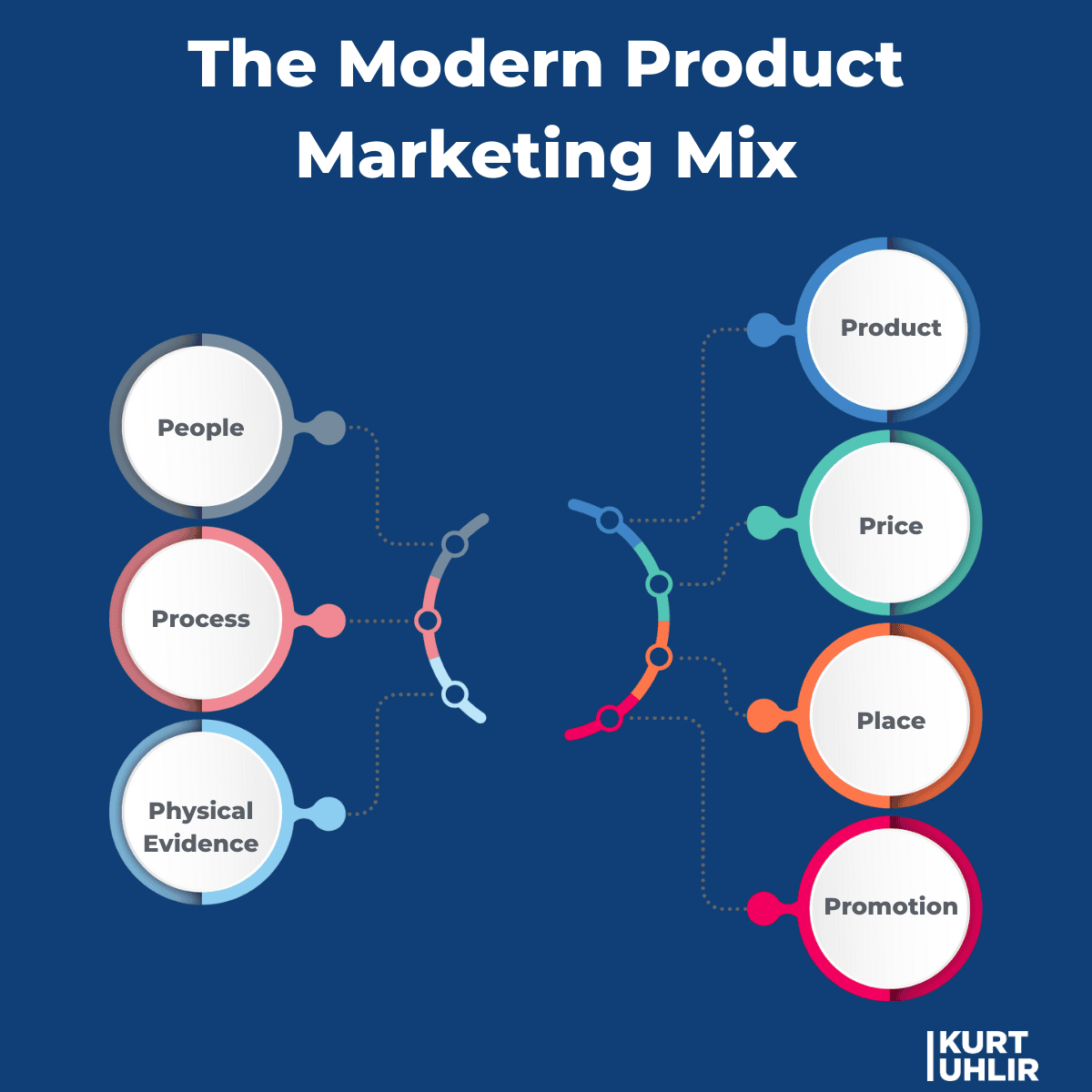
The Product Marketing Mix: The 4 Ps and Beyond
The traditional marketing mix of Product, Price, Place, and Promotion remains relevant for product marketers, with modern extensions:
- Product: Not just features but the complete solution to customer problems
- Price: Strategic positioning that reflects value rather than just costs
- Place: Distribution channels and buying experience
- Promotion: Communication strategies across all touchpoints
- People: The human elements of customer experience
- Process: How customers engage with your product
- Physical Evidence: Tangible proof of value and quality
Effective product marketers consider all these elements when developing their strategies, recognizing that a comprehensive approach yields the best results.
Building a Product Marketing Strategy for Technology Companies
Technology companies face unique product marketing challenges, including:
- Rapid innovation and short product lifecycles
- Complex technical features that need translation for customers
- Educated buyers who research extensively
- Competitive markets with frequent disruption
- Integration requirements with existing systems
One of my most successful technology product marketing initiatives was the go-to-market strategy for eXprealty.com‘s integrated matching platform. By positioning the platform as both a professional tool and a competitive advantage, we drove adoption among more than 80,000 agents, generating 30,000+ referrals in the first six months. The key was translating the technical capabilities of our proprietary SaaS martech offering into clear business outcomes for agents: more leads, better conversions, and increased commissions.
A successful product marketing strategy for technology companies includes:
- Technical Translation: Converting complex features into customer benefits
- Integration Messaging: Highlighting compatibility with existing systems
- Future-Proofing: Positioning products as adaptable to future needs
- Technical Authority: Establishing thought leadership and expertise
- Ecosystem Awareness: Understanding the broader technology landscape
- User Education: Creating resources that help customers maximize value
- Technical Validation: Providing proof points that build confidence
When HERE Technologies (then NAVTEQ) acquired Traffic.com for more than $150 million, we faced the challenge of integrating their real-time traffic data product into our existing portfolio. Our product marketing strategy focused on creating clear market segmentation between automotive, mobile, and enterprise applications, with tailored messaging for each vertical. This approach maintained the premium positioning of the Traffic.com data while expanding its market reach through our global distribution channels.
Essential Product Marketing Resources
If you want to level up your product marketing skills, consider these resources:
- The Product Marketing Alliance: This website aims to elevate the role of product marketing by providing businesses with resources, virtual communities, and events.
- Positioning: The Battle for Your Mind by Al Ries and Jack Trout: This classic provides an overview of product positioning and its importance in marketing.
- Product-Led Growth by Wes Bush: This best-selling book is the industry standard in product marketing plan guides.
- Obviously Awesome by April Dunford: A comprehensive guide to product positioning from a seasoned product marketer.
- CXL’s Product Marketing certification course: This course is an excellent option for those seeking an in-depth understanding of the field and its requisite skills.
FAQ
What’s the most critical part of product marketing? Among the most critical responsibilities of a product marketer are product positioning and market research. Without these foundations, it’s impossible to effectively communicate product value to potential buyers.
What are the four types of products? The four types of products are convenience, shopping, specialty, and unsought goods. Each requires different product marketing approaches and go-to-market strategies.
What factors matter when marketing a new product? The most important factors to consider when marketing a new product are the ideal customer profile, the competition, the unique value proposition, product testing, campaigns, and the life cycle of a product. Each element influences positioning and messaging decisions.
How do product marketing managers differ from marketing managers? A marketing manager assumes responsibility for communicating ALL value to potential customers—including brand and performance marketing. A product marketing manager deals exclusively with shaping a product and bringing it to market. Product marketing focuses on driving sales of specific products, while brand marketing looks at building brand awareness. Traditional marketing emphasizes promoting a company’s brand as a whole, while product marketing is specifically concerned with the products the company sells.
How can I measure product marketing success? Product marketing success can be measured through key performance indicators like marketing qualified leads, conversion rates, revenue growth, market share gains, customer engagement metrics, competitive win rates, and user adoption statistics. The most relevant metrics will depend on your specific business goals and product type.
What’s the difference between B2B and B2C product marketing? B2B product marketing focuses on rational decision-making, longer sales cycles, multiple stakeholders, and relationship building. B2C product marketing emphasizes emotional appeals, simpler buying processes, broader reach, and brand experience. Each requires different messaging approaches and marketing channels.
How does product marketing contribute to the product roadmap? Product marketing gathers crucial market insights, competitive intelligence, and customer feedback that inform product development priorities. By understanding market demands and gaps, product marketers help shape future product directions, ensuring development resources are allocated to features that will drive business growth.
What does a product marketer do on a daily basis? A seasoned product marketer typically spends time collaborating with cross-functional teams, analyzing market data, developing positioning and messaging, supporting sales efforts, monitoring competitive activity, creating marketing content, and measuring campaign performance. The role requires both strategic thinking and tactical execution.
How is SaaS product marketing different? SaaS product marketing differs from traditional product marketing in its focus on continuous engagement rather than one-time purchases. It emphasizes user onboarding, activation, and retention metrics. SaaS product marketing strategies often include freemium models, trial conversions, feature awareness, and self-service capabilities.
What makes for great product marketing campaigns? Great product marketing campaigns clearly communicate product value, target the right audience segments, differentiate from competitors, drive measurable results, and create memorable impressions. They align messaging across all touchpoints and support both short-term sales and long-term positioning objectives.
Kurt is a globally-recognized 10x marketer, operator, and speaker. He has built and run early-stage companies as well as those over $1B in annual revenue, assembled teams across six continents, been part of the small team leading an IPO ($880M), and participated in dozens of acquisitions. His unique experience being inside hundreds of high-growth companies with the opportunity to analyze, scale, make changes of leadership, and oversee operations has labeled him “the king of scaling companies”. This has enabled him to advise thousands of leaders, from startup founders to the President of the United States
Traditional Marketing vs Product Marketing
Traditional marketing? It’s all about casting the widest net possible—think TV, radio, print—to get your brand, products, or services in front of as many eyeballs as you can. The goal here is simple: build recognition and trust across the masses. While this approach is crucial for getting your company on the map, here’s the thing—it often stops short of truly connecting with what individual users actually need and want.
Product marketing flips the script entirely. Instead of going broad, it zeroes in on one specific product or service with laser focus. You’re not just throwing messages into the wind—you’re diving deep into functionality, unique features, and the real value your product delivers to a well-defined audience. Product marketing becomes the bridge between what you’ve built and what the market is actually craving.
Here’s where it gets interesting: a strong product marketing team doesn’t just launch products—they build the connection between what your product offers and what the market truly needs. By focusing on the user’s journey and delivering targeted, relevant information, product marketers can boost usage, unlock upsell opportunities, and drive sustainable growth that actually lasts. This approach doesn’t just help you launch successfully; it keeps your offerings top-of-mind as markets shift and evolve.
In today’s fast-moving world, are you ready to embrace what product marketing can do for your business? Marketers who specialize in this approach aren’t just nice-to-have—they’re essential for companies serious about increasing revenue, outpacing competitors, and building relationships that stand the test of time. With the right context and messaging, product marketing teams don’t just support growth—they make it inevitable.
Product Marketing Managers and Career Development
Product marketing managers aren’t just another cog in the marketing machine—they’re the conductors orchestrating your company’s entire go-to-market symphony. Think about it: who else bridges the gap between complex product features and compelling customer stories? These professionals don’t just lead cross-functional teams; they translate technical jargon into language that resonates, turning data into decisions and features into benefits. The core responsibilities of product marketing include launching products, driving awareness, and supporting sales teams, ensuring that every aspect of the product’s journey is strategically managed.
Here’s where it gets interesting. As product marketing managers sharpen their skills, they don’t just climb the ladder—they reshape it. Moving into director or VP roles isn’t just about managing more people; it’s about setting the strategic vision that drives entire organizations forward. But what separates the good from the exceptional? It’s their commitment to never stop learning. The best product marketing leaders stay hungry for industry insights, share knowledge freely, and understand that their success hinges on lifting others up, not just themselves.
Want to know the secret sauce for building high-performing marketing teams? It starts with investment—real investment in your people. We’re talking mentorship that matters, training programs that challenge, and hands-on experiences that stretch capabilities. Companies that get this right don’t just retain talent; they cultivate it. Here’s what that looks like in practice:
- Foster knowledge sharing that breaks down silos and builds bridges
- Create collaboration opportunities that spark innovation
- Provide tools and technologies that empower, not overwhelm
- Build a culture where marketers at every level feel empowered to grow
The pace of change isn’t slowing down—it’s accelerating. So what separates the product marketing managers who thrive from those who merely survive? They understand that development isn’t a solo sport. The most successful leaders don’t just prioritize their own growth; they become catalysts for their entire team’s evolution. They create organizations that don’t just adapt to market changes—they anticipate them. Are you ready to lead that transformation?
Product Marketing Tools and Technology
Modern product marketing teams don’t just need tools—they need the right tools. Here’s the thing: in today’s competitive landscape, your technology stack isn’t just a nice-to-have; it’s the difference between campaigns that convert and efforts that fall flat. From data analytics platforms that reveal what your users actually do (not what they say they do), to marketing automation tools that deliver targeted campaigns without burning out your team, the right technology transforms how you reach and engage your audience.
But what does this look like in practice? Think of it as building your marketing engine—one that works smarter, not harder. Here’s how the best product marketers are leveraging technology:
- Marketing automation platforms that send personalized emails, orchestrate multi-channel campaigns, and track every user interaction—all while your team focuses on strategy instead of manual tasks.
- Data analytics tools that cut through the noise, revealing which product features truly drive engagement and uncovering hidden opportunities for adoption.
- Custom integrations that connect your entire tech stack, creating a seamless flow of insights from user behavior to campaign performance.
Now, here’s where things get interesting—coding skills aren’t just for developers anymore. Product marketers who can build custom tools, automate repetitive workflows, or create interactive product demos that showcase key features? They’re not just staying competitive; they’re leading the pack. Using marketing automation can streamline repetitive tasks in SaaS marketing and provide a consistent personalized experience for users, enhancing both efficiency and customer satisfaction.
Your tools should work for you, not against you. When you invest in the right technology, product marketers don’t just deliver campaigns—they create experiences that resonate, drive efficiency that scales, and generate results you can actually measure. Whether you’re launching something brand new or optimizing what’s already working, the question isn’t whether you can afford to invest in better tools. It’s whether you can afford not to. Are you ready to transform how your team works?







